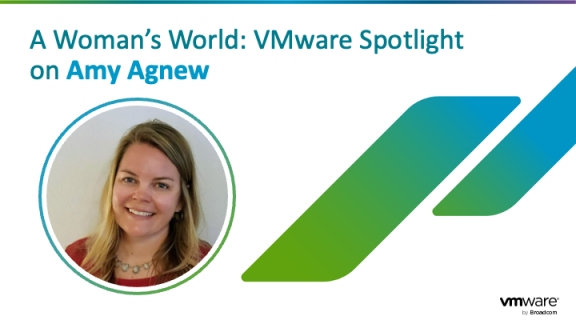This blog is part of a series about the operations pain points that many organizations face as they tackle digital transformation and change management. Our experts provide insights and recommendations based on their decades of hands-on experience and tackle some of the most pressing business and technology pain points.
Rapidly evolving technological advances are creating an exhilarating journey towards digital transformation. This shift isn’t only about incorporating new tools and systems but encompasses a holistic reimagining of processes, operations, and customer experiences.
To dive deeper into this transformative process, we spoke with two of our experienced consultants from the VMware EMEA Professional Services for Transformation Consulting team.
Shaun Herbert is based in the United Kingdom and has over 25 years of experience working directly with customers in both the public and private sectors. His background in technical and administrator roles led to managing IT departments and ultimately into consulting at Microsoft. He’s currently a consulting architect for transformation services at VMware and is passionate about customers gaining value and accelerating their efforts while creating better customer experiences through their multi-cloud platform.
Gielen Rojas-Lopez is based in the United Kingdom and has a diverse career background spanning almost 30 years that began in banking services and includes roles in technology management, business analysis, service design, systems improvements, and consulting in both the public and private sectors. Her professional experience has instilled a deep-rooted understanding of services provisioning with a foundation in customer-centricity and systems thinking. She uses her knack for visualization in her role to drive understanding and communicate ideas for effective transformation.
The transformation journey map
The graphic above represents the areas to consider when creating or modifying services within multi-cloud platforms. Represented in a format that resembles a metro train map, customers can visualize travel along various “lanes” of purpose and “stations” of focus areas.
Three sections are included in the transformation journey map:
- Accelerate to value
- Efficient platform capabilities
- Velocity and scale
This analogy allows customers to build their own path as they think about modernizing their platform or implementing solutions across public and private clouds.
Establishing a comprehensive strategy and roadmap
The first steps to start realizing value from a transformation are to articulate and document priorities and outcomes.
Shaun: Collective vision-building needs an emphasis on understanding a platform’s purpose, value, and potential benefits. It’s about bringing together diverse perspectives and ensuring alignment to create a clear path forward to reach expected value. Once the expected benefits, target audience, and value proposition are determined, it sets the stage for effective planning and execution.
Gielen: Developing the strategy and roadmap allows customers to understand the different stages of readiness. They articulate their specific pain points to resolve issues hindering their operations.
Addressing pain points and challenges
To address specific pain points and challenges, tailored solutions should be executed to enhance the overall functions within a platform through a holistic view of each unique IT environment.
Shaun: We can’t address problems in isolation. It’s a strategic and iterative progression and solutions are crafted with broader transformation goals in mind. A clear line of sight toward the long-term objectives outlined at the onset of transformation is key to success.
Gielen: Once an organization understands the stages of readiness for what they want to accomplish, they can focus on key areas for improvement such as complex processes, cybersecurity incidents, or cost management. To improve beyond tactical solutions, immediate problems need to be solved with a holistic perspective of the complete IT environment.
The role of operating models
Shaun and Gielen emphasize that operating models are not rigid templates, but dynamic and tailored approaches to achieve the value and outcomes desired from transformational changes.
Shaun: Every customer’s current operating model is unique. Operating models are influenced by various factors such as technology changes, market drivers, and internal cultural considerations. Certain patterns and markers of value can be identified as similar between different organizations, but there is no one-size-fits-all approach. The important thing is that any step within a transformation journey should be balanced and measured against the value requirements of the organization’s end goals.
Gielen: Value isn’t defined by a single product but encompasses the integration of multiple parts. For each transformation area, gathering customer feedback and evolving capabilities to meet a customer’s needs ensures that we take a customer-centered approach for continuous improvement and maximum value creation.
Proactive and transformative change
While value and efficiency can be improved throughout the IT ecosystem with tactical improvements, other transformation activities should be used to evolve, optimize, and scale services by incorporating new or more modern approaches to service delivery. Wherever possible, organizations should explore, experiment, and implement new ways of working with modern practices to innovate and achieve accelerated growth rather than solely seeking a tactical improvement.
Shaun: When discussing outcomes with customers, we always seek to understand the appetite for change. When businesses are looking to implement new strategies, scale their operations, or introduce innovative service offers, then we encourage and support them to move beyond tactical improvements and focus instead on using the opportunity for evolving their approach and ways of working. This means moving away from historical constraints and encouraging simplification with new approaches to reduce barriers for consumers to get value from their platform.
Approaching the transformation journey
Whether an organization needs to accelerate their approach, accomplish tactical improvements, or are ready to start innovating for scale, a transformation should meet their needs wherever they are in their unique journey.
Shaun: Accelerating transformation activities focuses on unblocking obstacles, creating roadmaps, and facilitating changes. These foundational steps set the stage for further development and growth.
Gielen: If clients need more help at the tactical level, we can help with the improvement of independent elements that will improve aspects of their activities and solve specific problems.
Transforming for better outcomes
Transforming for better outcomes includes bringing a balance of execution and agility to meet business needs. Effective transformations break silos, link systems, and strengthen processes.
Ultimately, transformations should deliver value by integrating operations, improving employee and customer experience, and optimizing technology in ways that help businesses reach their goals and excel within their industry.
Gielen: For each transformation area, gathering feedback at every stage helps to evolve capabilities and meet a customer’s needs. Taking this type of customer-centric approach helps achieve continuous improvement and maximizes value creation.
Want to learn more?
The “Operations Pain Points Solved” series highlights common issues faced by organizations everywhere. Read the other blogs in this series to learn about transforming company culture, managing complexity, transformation and AI, establishing a target operating model, optimizing the customer experience, transformation planning, managing people, and more.





